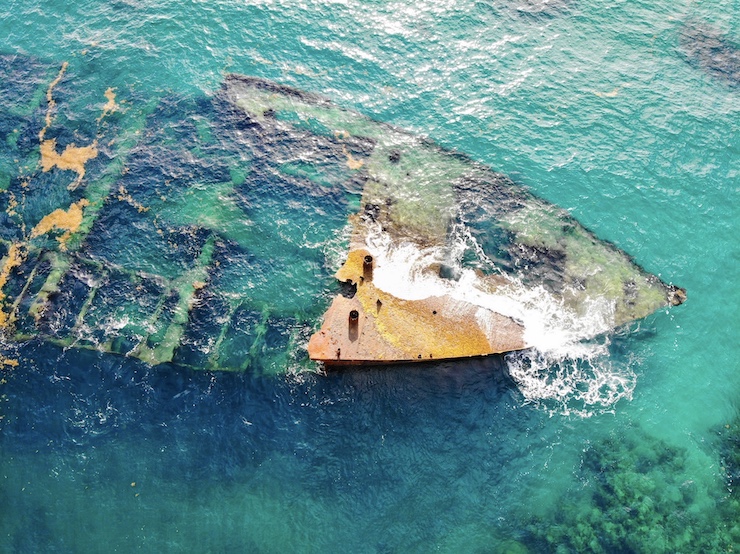
The sea was a cornerstone of nearly every aspect of Viking life during the late 8th-11th centuries. One of the greatest honors for a Viking of high ranking was to have an elaborate burial at sea when their time had come. Though the Vikings may be the best known culture to perform burials at sea, they were far from the first to follow such a ritual. Historians have found evidence of burials at sea dating back to the ancient Egyptians and Greeks. It is a custom that is still practiced by some today. However, most burials at sea that have taken place within the last century are those carried out by the military during times of conflict.
Throughout World Wars I and II, if an individual upon an active naval vessel passed away, they would be buried at sea. Naval ships at the time could not accommodate bodies long enough to be returned home for land burial. Having a body transported by air wasn’t realistic then. Other times battles would ensue, sinking a whole ship. In these situations, the sunken warships are deemed protected burial sites by the representing country, no matter what part of the world the ship sunk in.
It is illegal to tamper with any sunken warships. In 1942, off the coast of Indonesia, the British Royal Navy lost 3 ships in a battle. The HMS Electra, HMS Exeter, and HMS Encounter have since been protected maritime burial sites. About 5 years ago, it was discovered that looters had nearly stolen the entirety of the ships for scrap metal, desecrating the final resting spot of more than 200 individuals. Known maritime burial sites are well documented, but guarding them against thieves is not something that can easily be done. A fence can’t be erected in the middle of the sea to keep robbers out.
In July of 2021, Royal Navy chief Admiral Sir Tony Radakin paid a visit to Pearl Harbor. On December 7, 1941, Japan attacked the Hawaiian Naval base, prompting the United States to immediately enter WWII. All 8 of the US battleships in port were damaged, 4 of which were sunk, including the USS Arizona. Admiral Radakin gathered with others on a ship to honor the more than 900 soldiers buried with the USS Arizona. Speaking from the ship, Admiral Radakin said, “War graves need to be sacrosanct. There are thousands of graves at sea and the physical protection is an enormous task. There are no easy answers but my aspiration would be that in the future we’ll be using technology to cover specific war graves and large maritime protected areas.”
Being one of the most famous maritime memorials, the USS Arizona has never been subject to the threat of looters like the HMS Electra, HMS Exeter, and HMS Encounter. Luckily, the Royal Navy has been working with some of the most advanced engineering teams to develop drone technology for all areas of Naval activities. The Royal Navy has been testing drones for at sea rescues, resupplying goods, as well as offensive and defensive protocols. Now the Royal Navy has begun testing a submersive drone that could secure protected maritime sites.
Disguised as a manta ray, the drone would remain tethered to a power source. This means that the drone can remain submerged indefinitely. The drone would be able to relay a constant live video stream to a security station located anywhere in the world. The first line of defense that the drone would provide would be as a deterrent to would be plunderers. The second line of defense would be that the drone’s video would alert the closest authorities to report any possible crimes. “The underwater domain is going to become more and more important,” Admiral Radakin said. “The UK has a phenomenal advantage being one of the powers that is at the top end of those navies around the world that can operate in a very sophisticated way underwater. I’m very confident of our advantage in the North Atlantic.”
|